Georges Seurat (1859-1891)
Georges-Pierre Seurat (2 December 1859 – 29 March 1891) was a French post-Impressionist artist. He is best known for devising the painting techniques known as chromoluminarism and pointillism. While less famous than his paintings, his conté crayon drawings have also garnered a great deal of critical appreciation. Seurat's artistic personality was compounded of qualities which are usually supposed to be opposed and incompatible: on the one hand, his extreme and delicate sensibility; on the other, a passion for logical abstraction and an almost mathematical precision of mind. His large-scale work, A Sunday Afternoon on the Island of La Grande Jatte (1884–1886), altered the direction of modern art by initiating Neo-impressionism, and is one of the icons of late 19th-century painting.
Seurat was born on the 2 December 1859 in Paris, at 60 rue de Bondy (now rue René Boulanger). Georges Seurat first studied art at the École Municipale de Sculpture et Dessin, near his family's home in the boulevard Magenta, which was run by the sculptor Justin Lequien. In 1878 he moved on to the École des Beaux-Artswhere he was taught by Henri Lehmann, and followed a conventional academic training, drawing from casts of antique sculpture and copying drawings by old masters. Seurat's studies resulted in a well-considered and fertile theory of contrasts: a theory to which all his work was thereafter subjected. His formal artistic education came to an end in November 1879, when he left the École des Beaux-Arts for a year of military service.
After a year at the Brest Military Academy, he returned to Paris where he shared a studio with his friend Aman-Jean, while also renting a small apartment at 16 rue de Chabrol. For the next two years, he worked at mastering the art of monochrome drawing. His first exhibited work, shown at the Salon, of 1883, was a Conté crayon drawing of Aman-Jean. He also studied the works of Eugène Delacroix carefully, making notes on his use of color.
During the 19th century, scientist-writers such as Michel Eugène Chevreul, Ogden Rood and David Sutter wrote treatises on color, optical effects and perception. They adapted the scientific research of Hermann von Helmholtz and Isaac Newton into a form accessible to laypeople. Artists followed new discoveries in perception with great interest.
Chevreul was perhaps the most important influence on artists at the time; his great contribution was producing a color wheel of primary and intermediary hues. Chevreul was a French chemist who restored tapestries. During his restorations he noticed that the only way to restore a section properly was to take into account the influence of the colors around the missing wool; he could not produce the right hue unless he recognized the surrounding dyes. Chevreul discovered that two colors juxtaposed, slightly overlapping or very close together, would have the effect of another color when seen from a distance. The discovery of this phenomenon became the basis for the pointillist technique of the Neoimpressionist painters.
Chevreul also realized that the "halo" that one sees after looking at a color is the opposing color (also known as complementary color). For example: After looking at a red object, one may see a cyan echo/halo of the original object. This complementary color (as an example, cyan for red) is due to retinal persistence. Neoimpressionist painters interested in the interplay of colors made extensive use of complementary colors in their paintings. In his works, Chevreul advised artists to think and paint not just the color of the central object, but to add colors and make appropriate adjustments to achieve a harmony among colors. It seems that the harmony Chevreul wrote about is what Seurat came to call "emotion".
It is not clear whether Seurat read all of Chevreul's book on color contrast, published in 1859, but he did copy out several paragraphs from the chapter on painting, and he had read Charles Blanc's Grammaire des arts du dessin (1867), which cites Chevreul's work. Blanc's book was directed at artists and art connoisseurs. Because of color's emotional significance to him, he made explicit recommendations that were close to the theories later adopted by the Neoimpressionists. He said that color should not be based on the "judgment of taste", but rather it should be close to what we experience in reality. Blanc did not want artists to use equal intensities of color, but to consciously plan and understand the role of each hue in creating a whole.
While Chevreul based his theories on Newton's thoughts on the mixing of light, Ogden Rood based his writings on the work of Helmholtz. He analyzed the effects of mixing and juxtaposing material pigments. Rood valued as primary colors red, green, and blue-violet. Like Chevreul, he said that if two colors are placed next to each other, from a distance they look like a third distinctive color. He also pointed out that the juxtaposition of primary hues next to each other would create a far more intense and pleasing color, when perceived by the eye and mind, than the corresponding color made simply by mixing paint. Rood advised artists to be aware of the difference between additive and subtractive qualities of color, since material pigments and optical pigments (light) do not mix in the same way:
Material pigments: Red + Yellow + Blue = Black
Optical / Light : Red + Green + Blue = White
Seurat was also influenced by Sutter's Phenomena of Vision (1880), in which he wrote that "the laws of harmony can be learned as one learns the laws of harmony and music". He heard lectures in the 1880s by the mathematician Charles Henry at the Sorbonne, who discussed the emotional properties and symbolic meaning of lines and color. There remains controversy over the extent to which Henry's ideas were adopted by Seurat.
Seurat took to heart the color theorists' notion of a scientific approach to painting. He believed that a painter could use color to create harmony and emotion in art in the same way that a musician uses counterpoint and variation to create harmony in music. He theorized that the scientific application of color was like any other natural law, and he was driven to prove this conjecture. He thought that the knowledge of perception and optical laws could be used to create a new language of art based on its own set of heuristics and he set out to show this language using lines, color intensity and color schema. Seurat called this language Chromoluminarism.
In a letter to the writer Maurice Beaubourg in 1890 he wrote: "Art is Harmony. Harmony is the analogy of the contrary and of similar elements of tone, of colour and of line. In tone, lighter against darker. In colour, the complementary, red-green, orange-blue, yellow-violet. In line, those that form a right-angle. The frame is in a harmony that opposes those of the tones, colours and lines of the picture, these aspects are considered according to their dominance and under the influence of light, in gay, calm or sad combinations".
Seurat's theories can be summarized as follows: The emotion of gaiety can be achieved by the domination of luminous hues, by the predominance of warm colors, and by the use of lines directed upward. Calm is achieved through an equivalence/balance of the use of the light and the dark, by the balance of warm and cold colors, and by lines that are horizontal. Sadness is achieved by using dark and cold colors and by lines pointing downward.
The concept was well established among the French artists that painting could be expressed mathematically, in terms of both color and form; and this mathematical expression resulted in an independent and compelling "objective truth", perhaps more so than the objective truth of the object represented.
Indeed, the Neo-Impressionists had succeeded in establishing an objective scientific basis in the domain of color (Seurat addresses both problems in Circus and Dancers). Soon, the Cubists were to do so in both the domain of form and dynamics; Orphism would do so with color too.
Georges Seurat
 $450.00
$450.00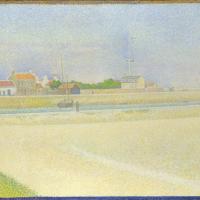 $450.00
$450.00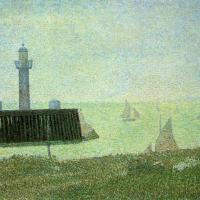 $450.00
$450.00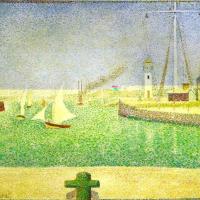 $450.00
$450.00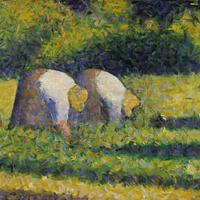 $450.00
$450.00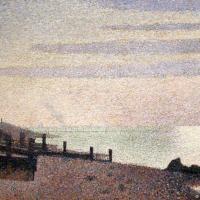 $450.00
$450.00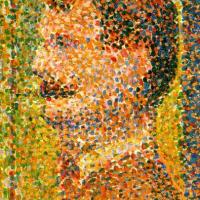 $450.00
$450.00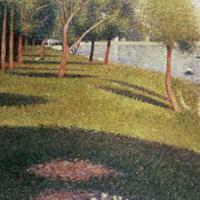 $450.00
$450.00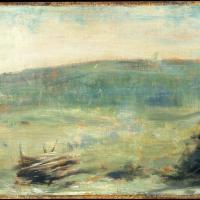 $450.00
$450.00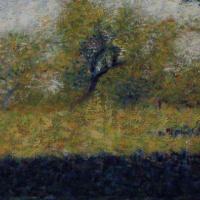 $450.00
$450.00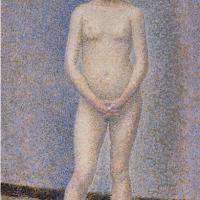 $450.00
$450.00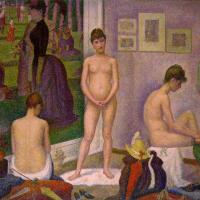 $450.00
$450.00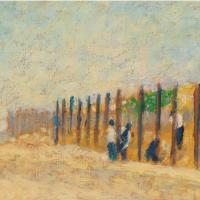 $450.00
$450.00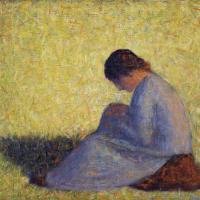 $450.00
$450.00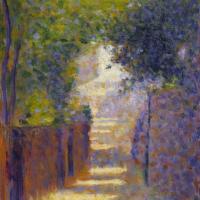 $450.00
$450.00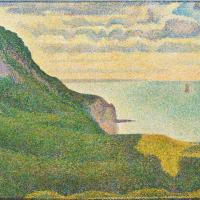 $450.00
$450.00 $450.00
$450.00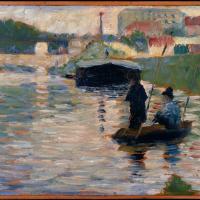 $259.00
$259.00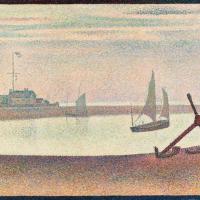 $450.00
$450.00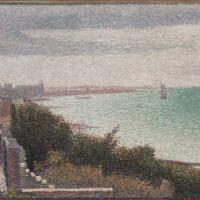 $450.00
$450.00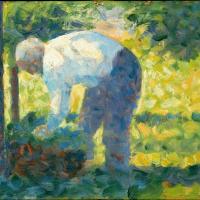 $450.00
$450.00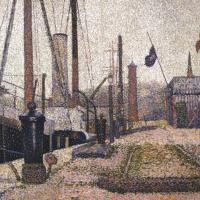 $450.00
$450.00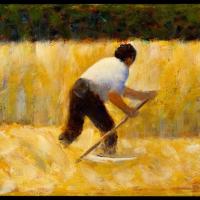 $450.00
$450.00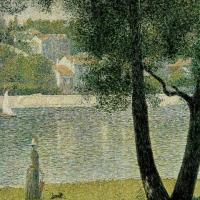 $450.00
$450.00

